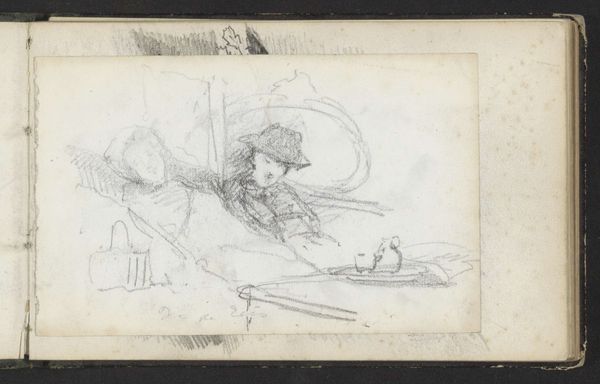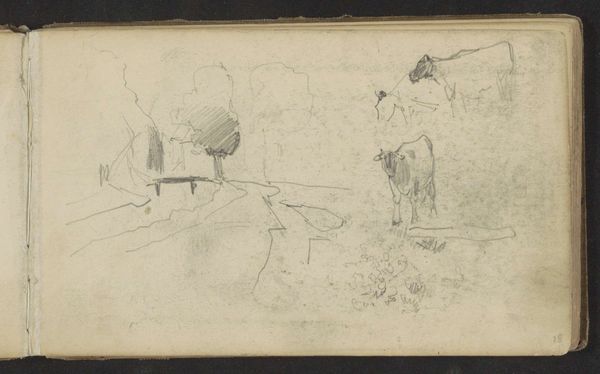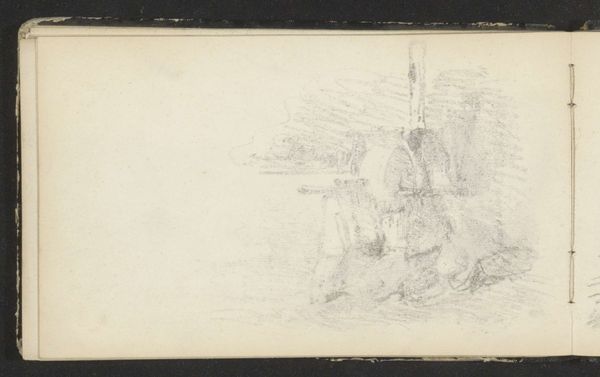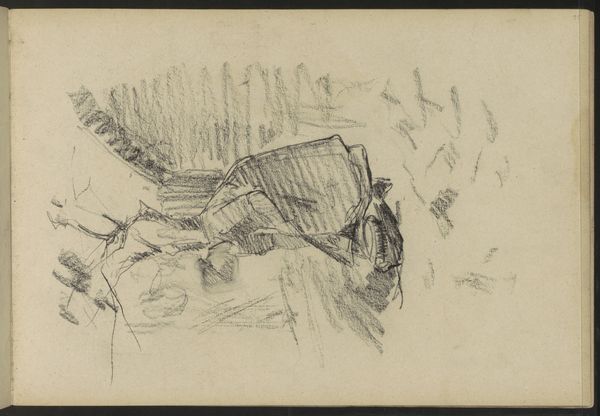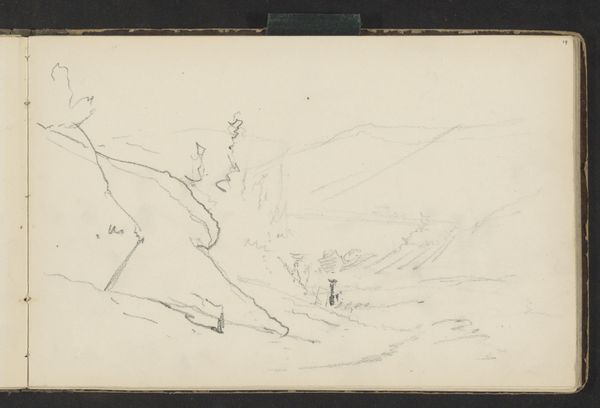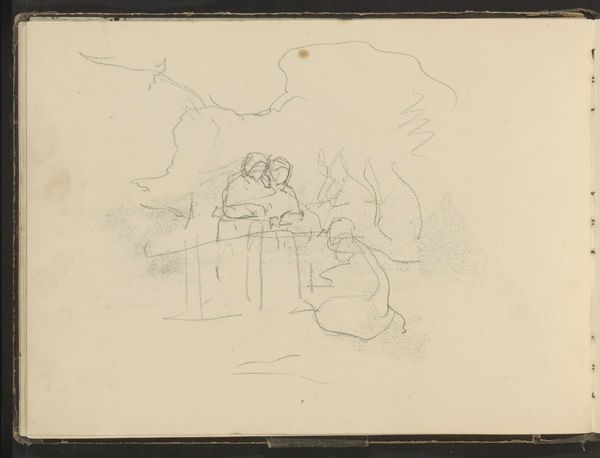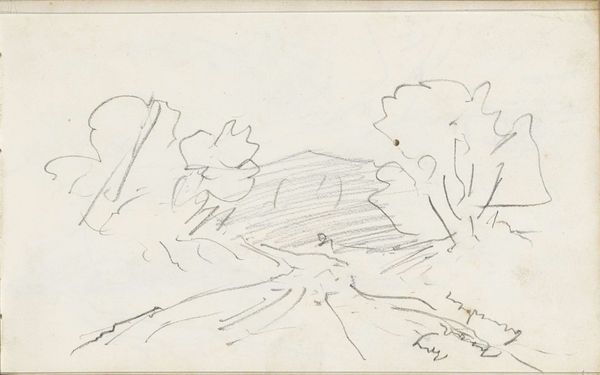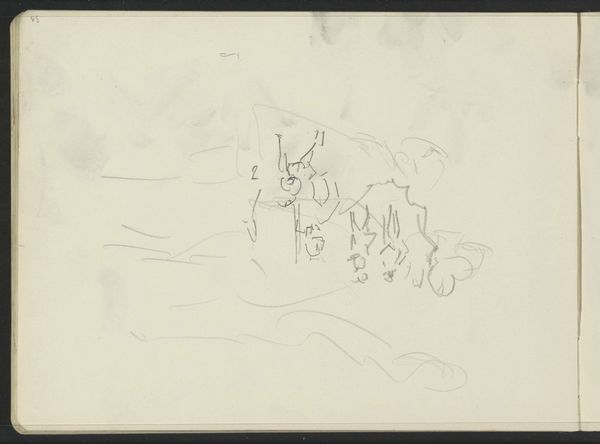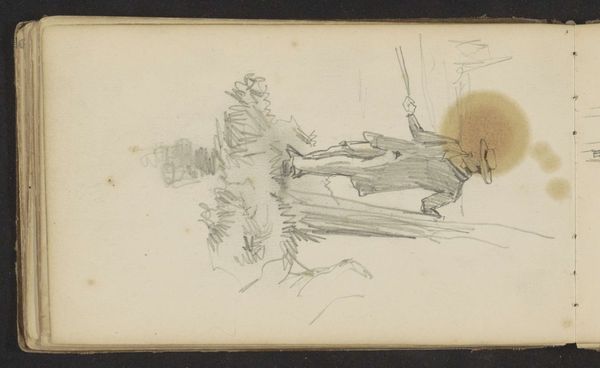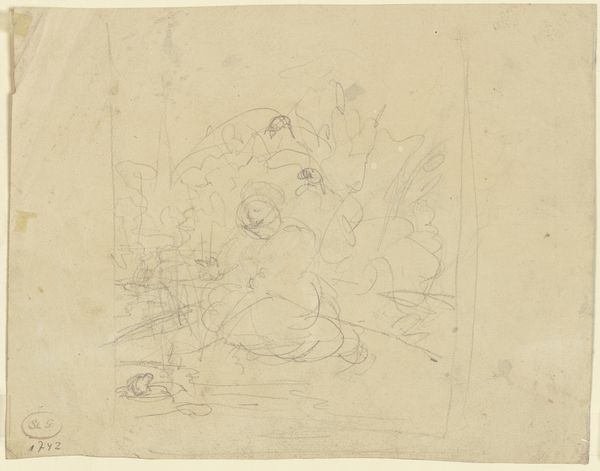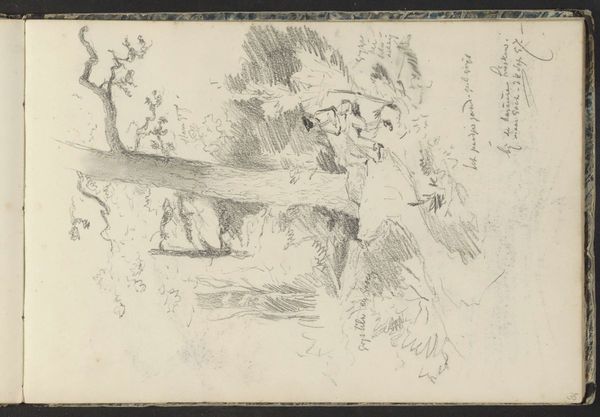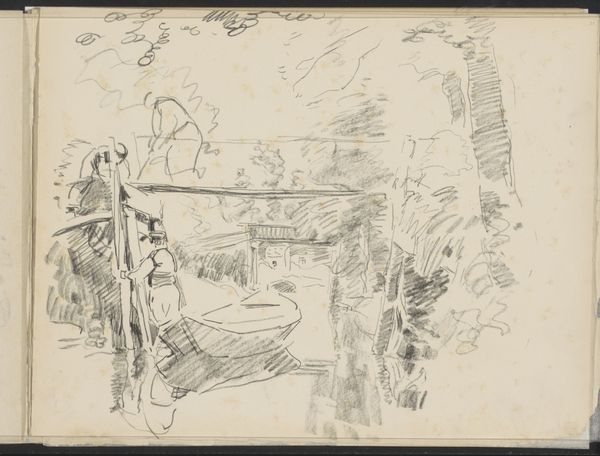
Copyright: Rijks Museum: Open Domain
Curator: Ah, this preliminary sketch by Maria Vos, titled "Landschap in Schlangenbad," made circa 1860-1865. A delicate landscape using pencil and ink. What’s your immediate reaction to it? Editor: The immediacy jumps out at me. The hurried pencil strokes capture a certain urgency, as though Vos were trying to preserve a fleeting moment. It feels raw and unfinished, an intimate peek into the artist's process, before the potential "refinements" imposed by salon expectations or public opinion. Curator: Absolutely, its unpolished character invites consideration of what constitutes artistic labor at this period. The sketch wasn’t necessarily intended as a final artwork. Vos may have intended for the piece to work as preparation for something more substantial. Editor: Exactly! The sketch hints at the Romantic ideals circulating during that time— a deep communion with nature, right? Schlangenbad was a popular resort town, frequented by upper classes. What did access to leisurely escapes look like then, who got to represent these idyllic spaces? This simple rendering allows an exploration into these ideas. Curator: I see that point—these works acted like travel records and captured the aesthetics associated with luxury and well-being, accessible to few, but consumed vicariously by many via art and visual culture. From a material standpoint, it highlights the portability afforded by drawings, that they could capture places outside of studios and bring art production to these destinations. Editor: The accessibility question lingers, doesn’t it? And even the very materials speak of their time; was this paper hand-made? And, whose labor contributed? Was her experience markedly different as a woman sketching landscapes during a time marked by patriarchal structures, influencing what spaces were considered 'acceptable' for female artists to inhabit and depict? Curator: Good point to note. Considering these broader contexts provides the opportunity to challenge traditional art historical narratives that too often marginalize women's experiences, not fully incorporating their lived experience as professional artist. It’s through analyzing materiality and social context like this drawing that allow insights into the production. Editor: And that is why looking closely helps us see clearly! Curator: Indeed, it shifts our perspective.
Comments
No comments
Be the first to comment and join the conversation on the ultimate creative platform.
